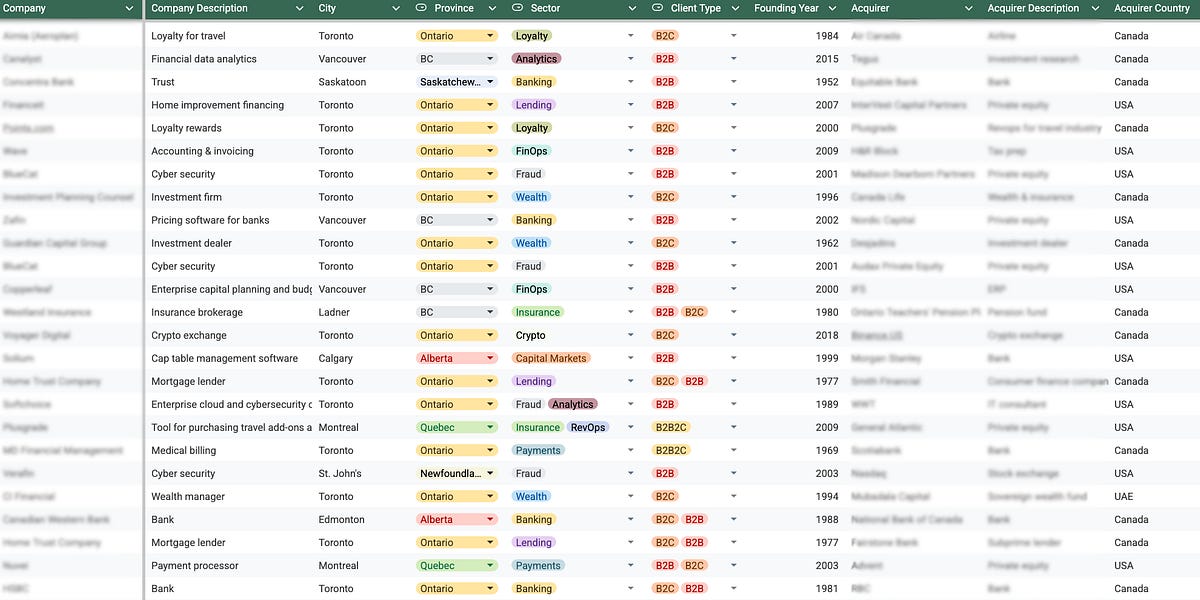2 Housing finance stocks winning with low NPAs and high growth
The housing finance sector in India has been witnessing strong growth, driven by rising homeownership and government-backed initiatives like Pradhan Mantri Awas Yojana. This gives housing finance companies (HFCs) a strong growth runway as demand remains strong.
HFCs have grown at about 13.5% CAGR over the past five years, buoyed by rising incomes, steady demand and a big push from the government. However, housing penetration remains low, with a mortgage-to-GDP ratio of 12.3%, much lower than 28% in China and 60% in the U.S.

This, along with the secure nature of lending, puts affordable HFCs in a better position to take advantage of the opportunity. Notably, the opportunity is enormous– ₹45 trillion– a huge gap to fill as the Indian economy grows.
Thus, we have selected two companies, Aadhar Housing Finance and India Shelter Finance, that have recorded industry-leading growth while maintaining low NPAs. They are poised to expand massively to exploit the massive tailwind.
Aadhar started operations in 2011 and is the leading low-income HFC in India. It caters to the home financing needs of the lower income segment of society and is among the few HFCs with a presence in pan-India.
It spans 20 states and serves over 2.6 lakh customers through 523 branches nationwide. It serves customers with monthly incomes of ₹5,000-50,000 and above and has an average loan ticket size of ₹1.5 million.
Aadhar’s excellent execution and diverse geographical presence have enabled it to grow strongly. Its assets under management (AUM) grew at a compound annual growth rate (CAGR) of 13% during FY22-24 to ₹211 billion in FY24.
71% of this AUM is focused on customers from the economically weaker section and low-income group. However, this declined from 80% in FY22, as the company gradually moved towards other lending solutions.
This robust growth was driven by strong disbursements, which grew at a CAGR of 21% during this period. Moreover, its AUM and disbursements grew by 23% and 20% in FY24 compared to the previous year.
The rise in AUM and disbursements has been accompanied by a strong return on assets (RoA), reflecting efficient capital deployment and prudent lending.
Its RoA increased to 4.2% in FY24, up from 3.2% in FY22, driven by above-25% growth in interest income and average credit costs of 0.33%. Its interest income increased 28% YoY to ₹21.5 billion, while credit costs reduced by 16%.
The reduction in credit costs was driven by strong asset quality, supported by a 100% secured retail book. Aadhar gross NPA as a percentage of AUM reduced to 1.1% in FY24 from 1.5% in FY22, while Net NPA came down to 0.7% from 1.1%.
This improvement in asset quality was accompanied by an increase in spreads. Its average yield increased to 13.8% in FY24 from 12.8% in FY22. This was driven by an increasing non-housing loan (HL) portfolio, which yields 16.5%, higher than HL yield of 12.4%.
On the other hand, the cost of borrowing increased by just 0.4% to 7.6%. Inspite of that, the spread widened to 6.2% (from 5.6% in FY22), driven by better loan yields. This coupled with robust AUM growth, and strong asset quality led to strong profit growth.
According to ICICI Securities, Aadhar Housing’s profit grew at an industry-leading growth of 19% CAGR to ₹7.5 billion in FY24. The strong profit growth increased its return on equity (RoE) to 18.4% in FY24 from 15.2% two years ago.
Looking ahead, Aadhar is striving to maintain the current growth rate. It aims to maintain a AUM growth of 20%, driven by improved productivity at newly opened branches.
It plans to add 70-75 branches in FY25. Credit cost is expected to remain at 0.2%. This, coupled with strong loan growth, operating leverage, stable portfolio, and a RoA of over 4%, will help Aadhar post a 23% profit CAGR until FY27.
ICICI Securities assigns a target price of ₹550 per share, 29% higher than the current market price (CMP). It is currently valued in line with the industry, trading at a price-to-book (P/B) ratio of 3.1x.
Founded in 1998, India Shelter offers affordable home loans and loans against property. Ninety percent of its AUM comes from India’s Tier 2 and 3 geographies. It maintains a broad portfolio with an average ticket size of ₹1 million.
It provides home loans to low—and middle-income customers, who account for 76% of its AUM. Most of its customers are first-time mortgage buyers, who account for 70% of its AUM.
It has a strong distribution area with its pan-India network across 15 states through 223 branches. Its AUM is well diversified and has no geographical concentration. 31% of AUM comes from Rajasthan, 17% from Maharashtra, 13% from Madhya Pradesh and the rest from other places.
India Shelter’s execution has been extraordinary, as is evident from its industry-leading AUM growth. Its AUM has grown at a CAGR of 48% since inception in 2011, and at a CAGR of 32% from Rs 11.8 billion in FY20 to Rs 61 billion in FY24, up 40% YoY.
The AUM is well diversified and secured, with 58% coming from home loans, while 42% is from loans against property (LAP). Notably, the home loan proportion has declined over time as it expands the LAP portfolio.
This strong AUM growth has been well-supported by 4.8x disbursement growth, from ₹5.5 billion to ₹26.5 billion in FY24. It is also accompanied by a strong RoA, which increased to 4.9% in FY24, up from 3% in FY20.
The RoA growth was driven by strong growth in interest income and improved operational efficiency, as reflected in the decline of the cost-to-income ratio from 51.1% to 41.1%.
The company also has strong asset quality due to the secured nature of its loans. Its gross NPA declined from 1.3% in FY20 to 1.0% in FY24, while net NPA declined from 1.0% to 0.7%. The strong asset quality also led to a decline in credit cost to 0.4%, from 0.9% in FY20.
Further, strong asset quality helped maintain the cost of funds at 8.8% (as of March 2024), while the yield rose marginally by 0.2% YoY to 14.9%. Consequently, the spread widened to 6.1% (from 6% in FY23).
Higher spread, robust AUM growth, and strong asset quality led to strong profit growth. India Shelter’s profit grew at a 40% CAGR to ₹2.5 billion in FY24, outperforming peers. The strong profit growth increased its RoE to 14% in FY24 from 5.7% in FY20.
Looking ahead, the company has set its eyes on a strong 2030 vision. It aims to reach an AUM of ₹300 billion, implying a CAGR of 31% until FY30. It also aims to improve its RoE to over 17%.
To this end, it plans to add 40-45 new branches yearly to bring the total number to about 500 by FY30, up from the current 223 branches. In addition, the company aims to have strong asset quality despite focusing on the high-yielding self-employed segment, which forms 75% of its customer base.
ICICI Securities assigns a target price of ₹850 per share, 13% higher than the CMP. It is currently valued in line with the industry, trading at a price-to-book (P/B) ratio of 3.3x.
Two-thirds of India’s 1.2 billion population live in remote, rural areas away from urban centres. However, this is expected to change gradually. As per Aadhar Housing, urban areas are projected to host 40% of India’s population by 2030, up from the current 36%. This will lead to a rise in the demand for affordable housing in urban areas.
However, there remains a supply-demand imbalance, which currently stands at 10 million homes, which is expected to increase to 32 million by 2030. This gives banks and HFCs a potential financing opportunity of ₹45 trillion in the affordable housing sector, 3.5 times higher than the current loan volume of ₹13 trillion.
Notably, HFCs have a 53% market share in the total loan market (with the balance with commercial banks), giving them a huge opportunity to capitalise on the growing demand for affordable housing. This would allow companies like Aadhar and India Shelter a significant tailwind to keep growing.
We have relied on data from www.Screener.in throughout this article. Only in cases where the data was not available, have we used an alternate, but widely used and accepted source of information.
The purpose of this article is only to share interesting charts, data points and thought-provoking opinions. It is NOT a recommendation. If you wish to consider an investment, you are strongly advised to consult your advisor. This article is strictly for educative purposes only.
Madhvendra has been deeply immersed in the equity markets for over seven years, combining his passion for investing with his expertise in financial writing. With a knack for simplifying complex concepts, he enjoys sharing his honest perspectives on startups, listed Indian companies, and macroeconomic trends.
A dedicated reader and storyteller, Madhvendra thrives on uncovering insights that inspire his audience to deepen their understanding of the financial world.
You can connect with Madhvendra on LinkedIn to explore his insights more and engage in meaningful discussions.
If you are keen to know more about Nifty 50 and BSE Sensex levels ... Read More and seek expert advice on what's driving the gains and how to build your portfolio, track the latest stock market stats, share market news and top brokerage bets on Financial Express. Download the Financial Express App for the fastest and most reliable business news alerts, key investment strategies and latest movers and shakers from across financial market.
This article was first uploaded on March eleven, twenty twenty-five, at zero minutes past six in the morning.











